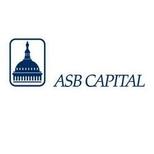 Manager: ASB Capital
Manager: ASB Capital
Model: Large Cap Core Equity
Stocks produced their strongest opening gains since 1998 during an eventful first quarter. As a recent Federal Reserve statement noted, “the economic recovery is on firmer footing and overall conditions in the labor market appear to be improving gradually.” Meanwhile, core inflation readings are well within the Fed comfort level with restrained wage gains and the “output gap” (excess capacity) viewed as guarding against future spikes.
Corporate profits remain strong. In addition, attractive interest rates provide the opportunity for corporations to increase earnings per share by issuing low cost debt or re-purchasing shares. Low interest rates, increased accessibility of financing, and ascendant stock prices provide cheap capital and are revving up the merger and acquisitions engine.
Consumer spending is improving, and the stock market rise is creating additional wealth and purchasing power, while realized capital gains also provide the government badly needed incremental tax revenues. Consumer balance sheets have strengthened somewhat due to the
improving job market, more saving and less spending, and the removal of debt, albeit via default.
Purchasing a home is as affordable as it has been in years due to lower prices and low mortgage rates. Less favorably, sales of new homes recently hit the lowest level since records began in 1963. Sales of existing homes are similarly weak. Prices are declining, and the inventory of pending foreclosures continues to pile up.
Hiring is finally starting to catch up to population growth, and fewer workers are being let go. The unemployment rate is dropping due to job creation and the large number of persons without jobs who are no longer being counted as part of the workforce.
The Federal Reserve has enabled deficit spending by essentially printing money in order to buy most of the debt. The government then funds items such as extended unemployment benefits, food stamps, and social security disability payments. It also has directed $150 billion to the states, which were then able to delay layoffs or cuts in services, wages, or benefits.
Even as official headline inflation numbers remain tame, soaring commodity prices, notably food and energy, continue to reduce funds available for consumer discretionary purchases. These costs are rising in large part as a result of increased liquidity caused by monetizing the federal government’s ballooning deficits. As producer prices jump, businesses are finding it difficult to pass along these higher input and transportation costs to consumers, who are still pinched. A variety of high profile companies are already warning that, at least in the near term, historically-high profit margins may be at risk.
With states struggling to meet budget, new governors clashed with public sector unions in riveting dramas that featured tough talk, spirited demonstrations, and lawmakers on the lam. With the Federal government running a $1.65 trillion annual deficit and legislators still working on a budget that is months overdue, both parties debated spending cuts while trying to spin a potential government shutdown as the fault of the other.
Overseas, the European Central Bank laid the groundwork for raising short-term interest rates to guard against inflation. While perhaps necessary, higher rates would not be helpful to the economies of Greece, Ireland, and Portugal, which teeter on the brink of debt default, with (much larger) Spain perhaps not far behind.
Several countries in North Africa and the Middle East erupted in protests and violence. The U.S. and NATO pursued military action against the ruler of Libya. Oil prices went up amidst the uncertainty.
An epic natural disaster hit the world’s third largest economy when Japan was rocked first by an earthquake, then a tsunami, followed by a nuclear crisis. In addition to the tragic loss of life, it remains unclear what effect the destruction of property, the potential power interruptions, and the disruption of global supply chains will have on global economic growth.
Equity Investment Strategy
Continuation of current fiscal and monetary policies will likely contribute to the further rise in the costs of food, energy, and raw materials, squeezing consumer purchasing power and corporate profit margins. Consensus economic growth prospects were recently downgraded due to just such cost pressures, and at some point meaningfully higher interest rates may be necessary to shore up the dollar, tame resurgent inflation, and entice investors to hold Treasuries.
Conversely, if government borrowing and spending is reduced, fewer recipients of transfer payments will be cushioned from the effects of a still uninspiring job market and their spending may be lost. Payments to the states run out in July, and budget cuts are already in evidence. The $600 billion ‘QE2’ debt buying campaign of the Fed is currently scheduled to expire in June. Whether the policy will be continued, via ‘QE3’, is an open question. Ultimately, economic gains will prove sustainable only if driven by increases in aggregate output rather than financial engineering.
In addition to repayment or default, a sovereign government with a printing press can implement the additional option of “stealth” default via inflation and currency debasement. However, there are borrowing limits even for sovereigns, as voters and lenders eventually figure out that the tab will be picked up in the form of reduced purchasing power and higher future taxes. Therefore, continued deficit spending can postpone, but not eliminate, the need for budget cuts. Compound interest ensures that the cutting will be even more severe when the problem is finally addressed.
Since neither austerity nor inflation generally aids the economy, we continue to position our portfolio in large, growing, conservatively-financed firms, which on the whole are not as dependent on strong and sustained economic expansion as is the broader market.
The smaller and more economically sensitive stocks that have recently outperformed the market are trading at or near all-time highs. These stocks tend to be linked to the “risk on” trade, which assumes a strong and sustainable recovery. With valuations stretched, these stocks could be subject to sharp corrections should profit margins contract or the economy slow due to de-leveraging, diminished transfer payments, and/or the withdrawal of the monetary elixir.
In contrast, many of the companies we favor have much more stable earnings streams but are trading at historically low valuations, providing both absolute return potential and a relative valuation advantage should the economy or the stock market become turbulent.
Source for Fed statement:
Board of Governors of the Federal Reserve System, press release, 3/15/11
http://www.federalreserve.gov/newsevents/press/monetary/20110315a.htm?bcsi_scan_AEECBAA61630B888=0&bcsi_scan_filename=20110315a.htm

